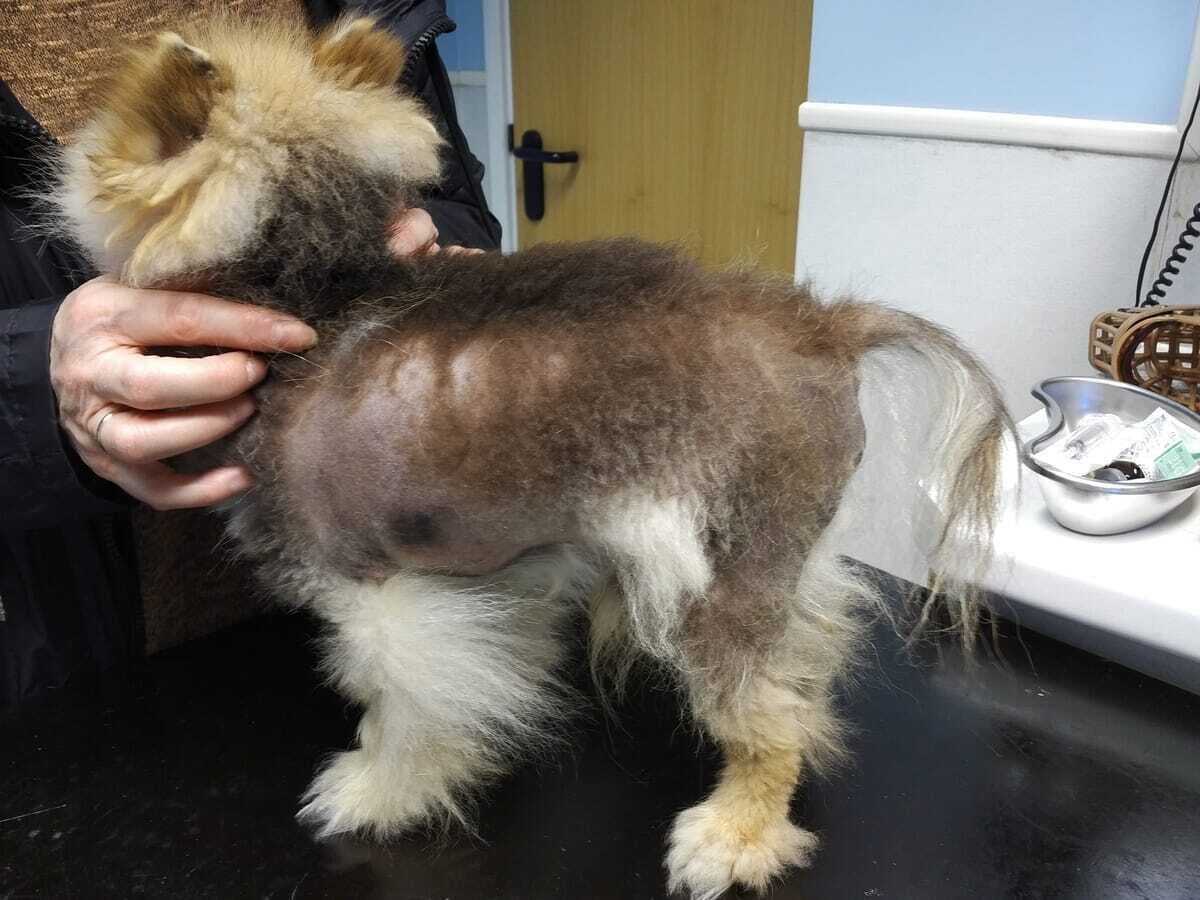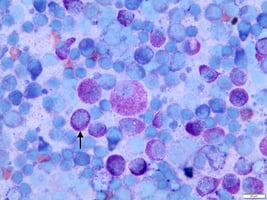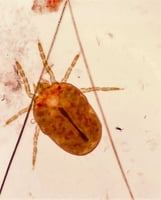Alopecia is the loss of hair in areas which were previously haired. There are many causes of hair loss, but alopecia X refers to a non-inflammatory, mainly symmetrical condition in which there is hair cycle arrest. Hair has a cyclical growth pattern, comprising a growth phase (anagen), a transitional phase (catagen) and a resting phase (telogen). The duration of each phase depends on the breed and on both intrinsic and extrinsic factors. The intrinsic factors are at the level of the hair follicle and the extrinsic factors are produced from distant organs; for example, the thyroid gland produces the thyroid hormone that initiates anagen. Some causes of hair cycle arrest, such as hypothyroidism, hypercortisolism and some of the sex hormone-associated conditions, are easily identifiable through meticulous history taking, clinical signs and laboratory testing.
Pathogenesis
No single pathogenic mechanism can be applied to alopecia X, because it encompasses a range of different conditions described in the literature. These include adult-onset growth hormone deficiency, growth hormone responsive dermatosis, castration responsive alopecia, biopsy responsive dermatosis, adrenal sex hormone imbalance, congenital adrenal hyperplasia syndrome, follicular dysplasia of Nordic breeds (woolly syndrome, coat funk in Malamute) and follicular growth dysfunction of plush-coated breeds. These different terms have been derived at different times from the results of laboratory testing, clinical response to treatments and interventions taken to initiate hair growth. However, since plush-coated breeds seem to be predisposed to this condition, a genetic predisposition to defects in the hair cycle at the level of the hair follicle and/or hormonal dysfunction are suggested. So, until such time a clearer picture emerges, one can continue to use the term alopecia X for all these conditions.
Presenting signs
Young adult dogs of either sex (intact or neutered) in the predisposed breeds present with varying degrees of hair loss. The initial signs relate to the loss of primary hairs, leaving the dogs with a woolly/fuzzy coat that is mainly composed of secondary hairs. The signs of alopecia worsen progressively through
the trunk, sparing the head and distal limbs ( Figure 1), and the underlying skin is often hyperpigmented and dry ( Figure 2). The areas of friction such as the neck ( Figure 3) and caudal thighs are often first to lose the hair.
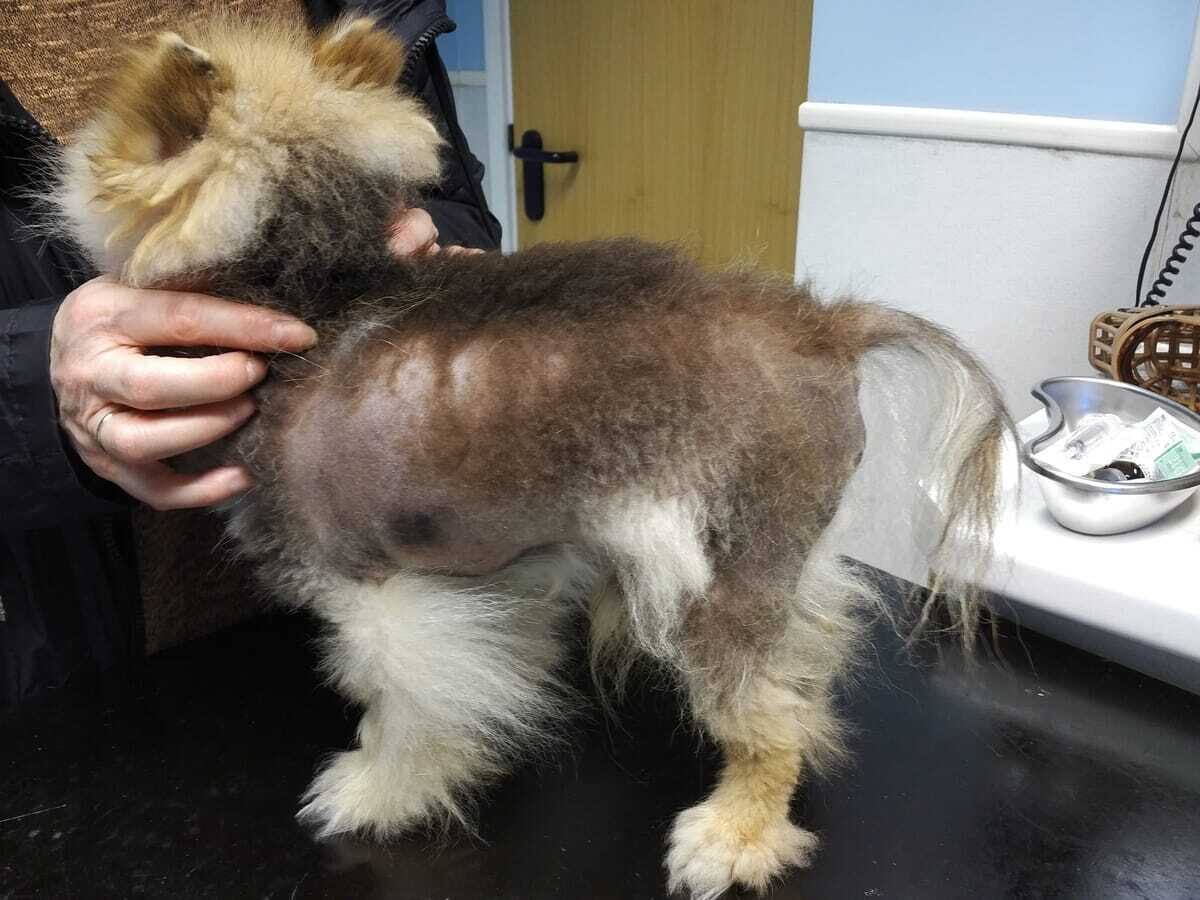
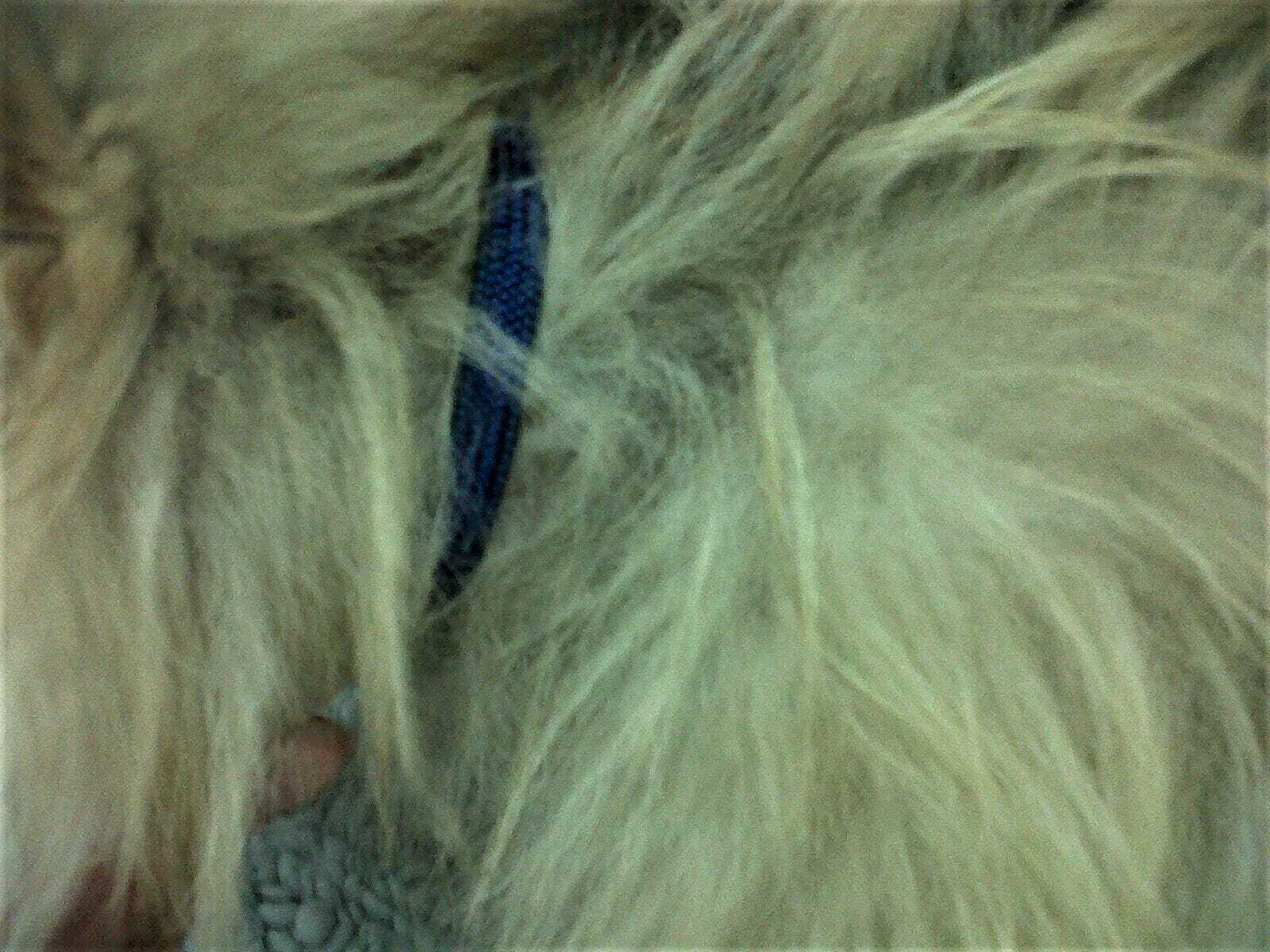
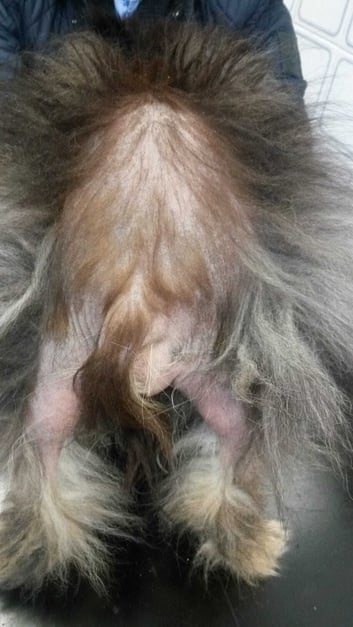
These dogs have a normal appetite without any indications of polyuria or polydipsia. They are otherwise generally in good health.
Diagnosis
The diagnosis of alopecia X is based on the history and clinical signs and by ruling out other causes, such as hormonal imbalance (eg hypothyroidism, hyperadrenocorticism, hyperoestrogenism), sebaceous adenitis and follicular dysplasia (colour dilution alopecia and cyclical flank alopecia). Figure 4 shows a suggested diagnostic pathway to follow. The findings on the initial tests differ for the two main differentials in most cases and are summarised in Table 1
.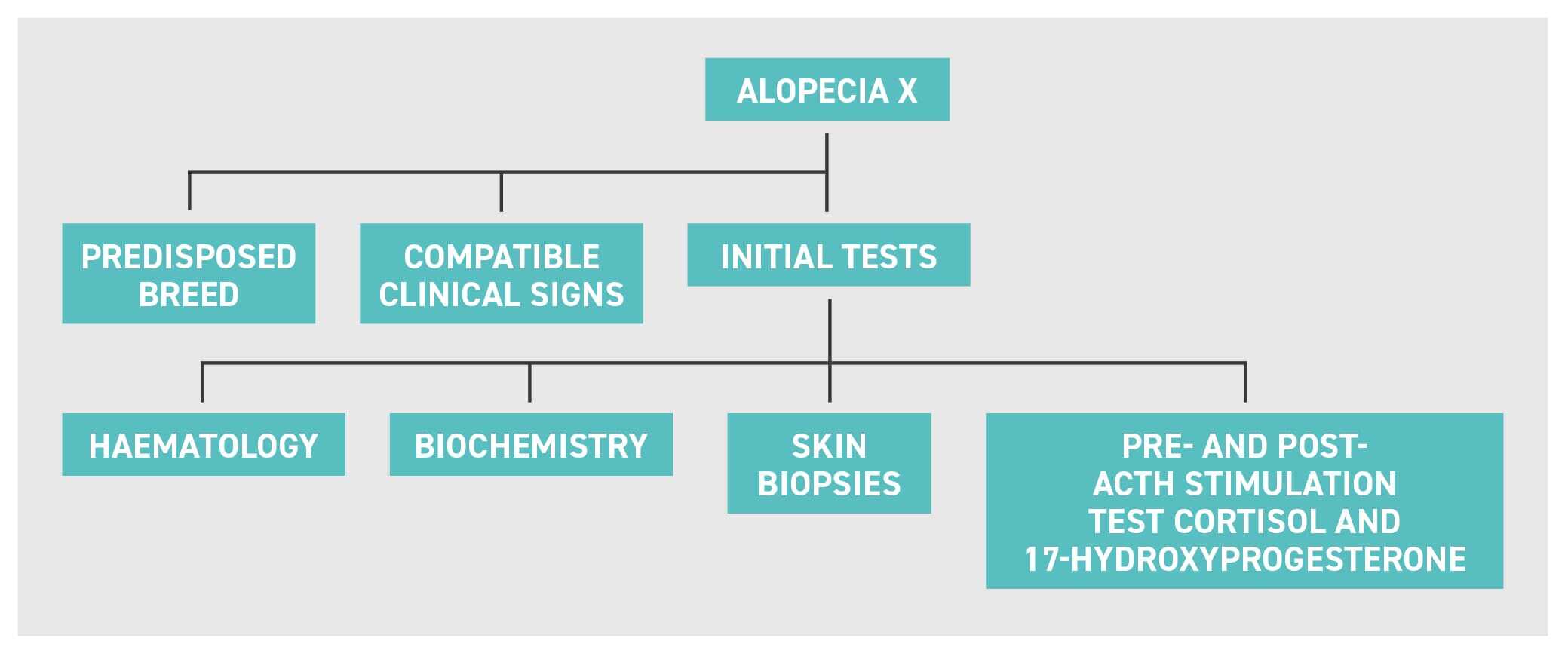
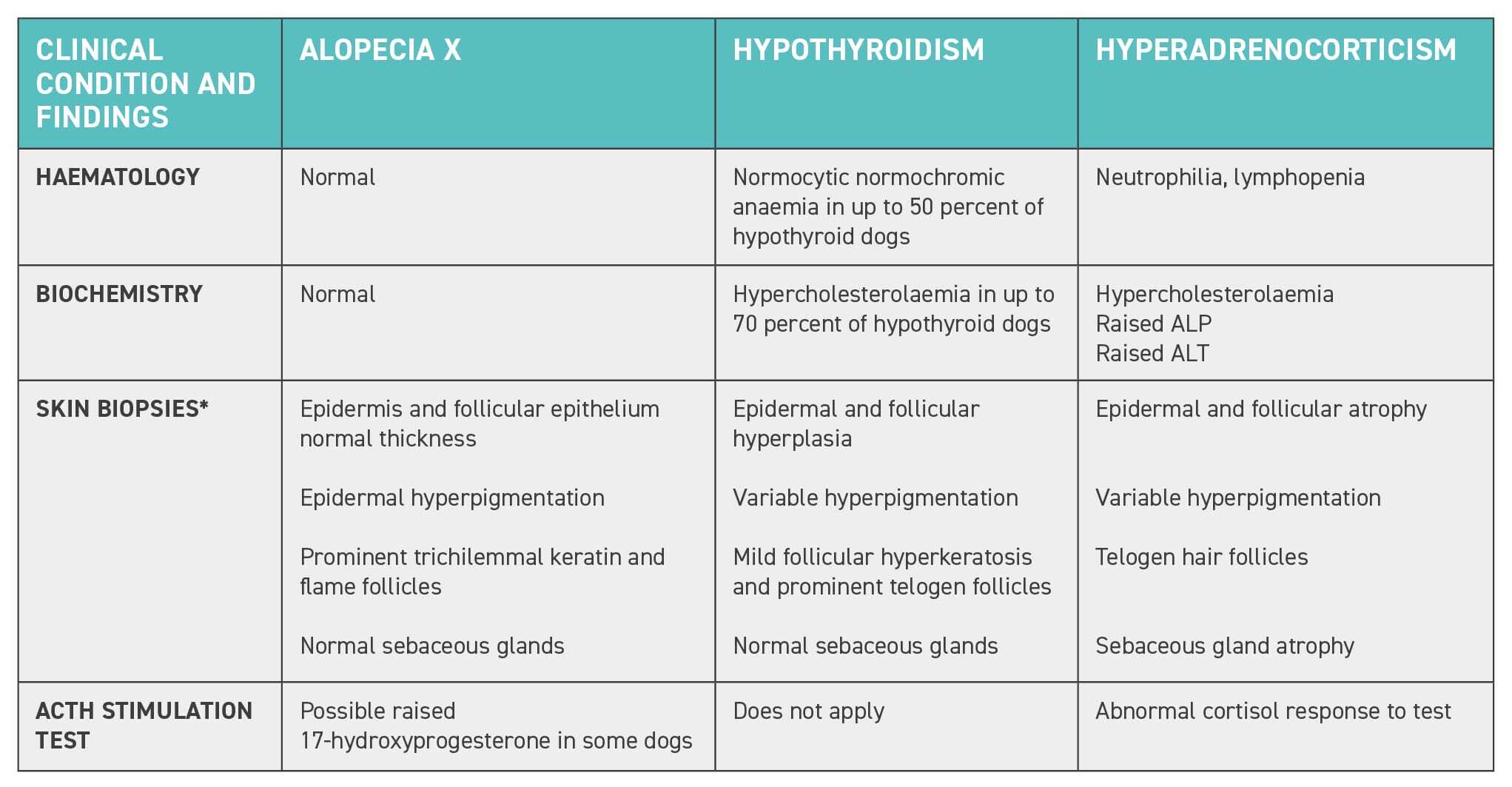
Treatment
Treatment depends on individuals. First, if the affected dog is entire, castration is recommended, as this may induce hair regrowth in some individuals. If the owner is unwilling to castrate the animal, then deslorelin may be an option to see if it helps and maybe to proceed with castration later. Other options include melatonin at 3 to 6mg q12h PO for 3 to 4 months. Hair growth has also been reported in Pomeranians and Miniature Poodles when treated with trilostane. One could argue that the benefit from trilostane may not be sufficient to warrant the potential side effects for a condition that could be classed as an aesthetic problem. The author often recommends benign neglect and buying the dog a bodysuit.
_OL_CourseThumb.jpg?width=500&height=300&name=IVE_GPCert(Derm)_OL_CourseThumb.jpg)
Small Animal Dermatology
ISVPS General Practitioner Certificate (GPCert)
HAU Postgraduate Certificate (PgC)
References (click to expand)
| Cerundolo, R., Lloyd, D. H., Persechino, A., Evans, H. and Cauvin, A. | 2004 | Treatment of canine alopecia X with trilostane. Veterinary Dermatology, 15, 285-293 |
| Frank, L. A., Hnilica, K. A. and Oliver, J. W. | 204 | Adrenal steroid hormone concentrations in dogs with hair cycle arrest (alopecia X) before and during treatment with melatonin and mitotane. Veterinary Dermatology, 15, 278-284 |
| Lee Gross, T., Ihrke, P., Walder, E. J. and Affolter, V. K. | 2005 | Alopecia X. In: Skin Diseases of the Dog and Cat: Clinical and Histopathologic Diagnosis. Blackwell Science, Oxford, pp. 494-497 |
| Leone, F., Cerundolo, R., Vercelli, A. and Lloyd, D. H. | 2005 | The use of trilostane for the treatment of alopecia X in Alaskan Malamutes. Journal of the American Animal Hospital Association, 41, 336-342 |
| Miller, W. H., Griffin, C. E. and Campbell, K. L. | 2012 | Endocrine and metabolic diseases. In: Muller and Kirk’s Small Animal Dermatology. Elsevier, Mosby, St Louis, pp. 537-540 |

